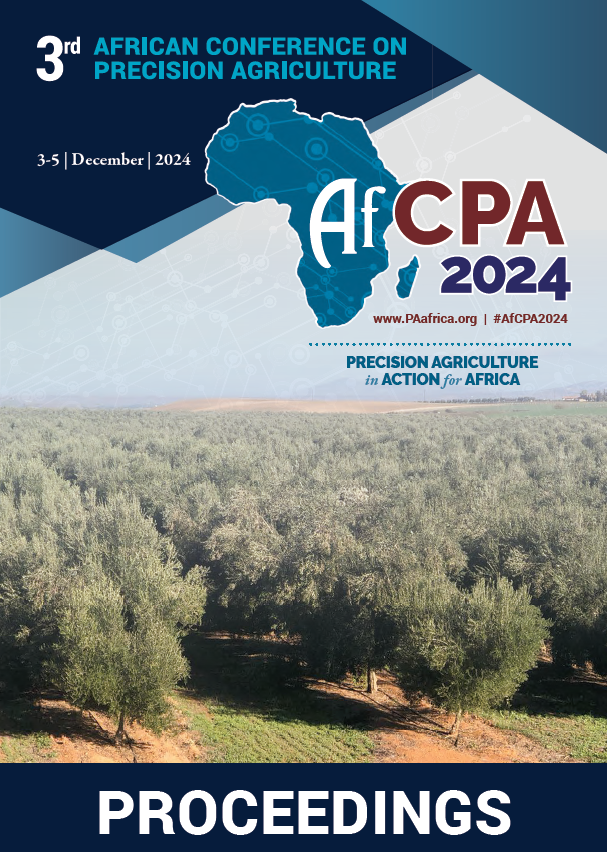Download the Conference Proceedings
Get your copy of the 2024 African Conference on Precision Agriculture Proceedings today! Download the PDF file and view all of the available proceedings.
Proceedings
Authors
| Filter results1 paper(s) found. |
|---|
1. Unmanned Aerial Vehicles (UAVs) for Phenotypic Traits Estimation & Yellow Rust Disease Severity Assessment in Small-scale Wheat Breeding Trials in EthiopiaRemote Sensing (RS) platforms; like the Unmanned Aerial Vehicles (UAVs) are recently gaining traction in agricultural data collection systems and used for various phenotyping of breeding field trials and capturing different biophysical, biochemical and sanitary traits which can be used to predict and explain the resulting yield and selecting better verities. Compared to the conventional phenotyping usually done by visual scoring and manual measurements which is time consuming/back breakings, susceptible... T. Anberbir, G. Mamo , A. Dabi |
